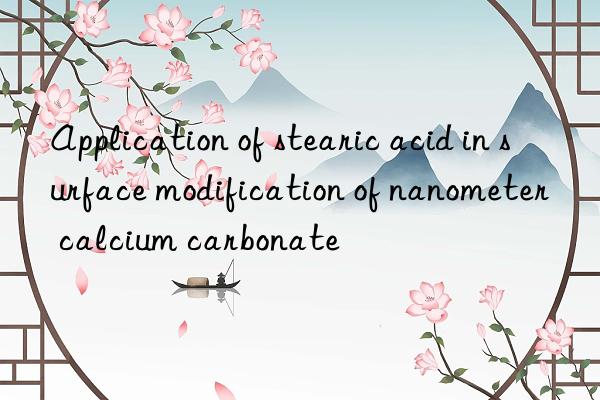
There are two major shortcomings in the application of nano-calcium carbonate in organic media: First, nano-calcium carbonate is an inorganic material with a hydrophilic and oleophobic surface. It has poor dispersion in polymers and poor affinity with organisms, and it is easy to form agglomerates. The direct application effect is not good, resulting in a decline in material performance; secondly, the particle size of nanometer calcium carbonate is small, the number of surface atoms is large, the surface energy is large, and the interaction force between particles is strong, which easily forms the agglomeration of nanometer calcium carbonate powder. As the amount of nano-calcium carbonate used increases, these defects become more obvious, and excessive filling will render the material unusable.
Stearic acid is a common long carbon chain saturated fatty acid, which has both a lipophilic end of the long carbon chain and a hydrophilic end of the carboxyl group. The surface of nano-calcium carbonate is hydrophilic, so coating the surface of nano-calcium carbonate with stearic acid can greatly improve its lipophilicity, so that when filled in rubber, plastics, high-grade inks, and coatings, its larger ratio The surface area and high specific surface energy are conducive to the strong bonding between calcium carbonate particles and organic polymer molecules, which can make the surface of the product bright and have excellent reinforcing properties.
1. Mechanism of stearic acid-coated modified nanometer calcium carbonate
In recent years, There are also endless studies on coating modified nanometer calcium carbonate with stearic acid.
Chen yijian et al. explored the formation process of stearic acid (SA) monolayer calcium carbonate crystals at the air-water interface. Electron microscopy and in-situ Brewster's angle microscopy were used for testing and characterization, and it was observed that under the stearic acid monolayer, the final calcium carbonate crystals were formed from a particle precursor rather than directly from solvation. ion. From scanning electron microscopy (SEM) and transmission electron microscopy (TEM), it can be found that the precursor particles are uniform spheres of amorphous calcium carbonate with a diameter of less than 100 nm. The experiment is to generate calcium carbonate through the reaction of Ca(OH)2 and CO2. In the early stage of mineralization, amorphous calcium carbonate is produced and exists stably for at least 0.5h. As the amount increases, amorphous calcium carbonate aggregates to form Calcite phase calcium carbonate



 微信扫一扫打赏
微信扫一扫打赏
